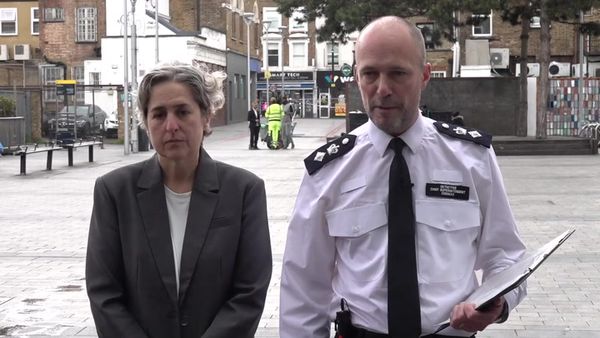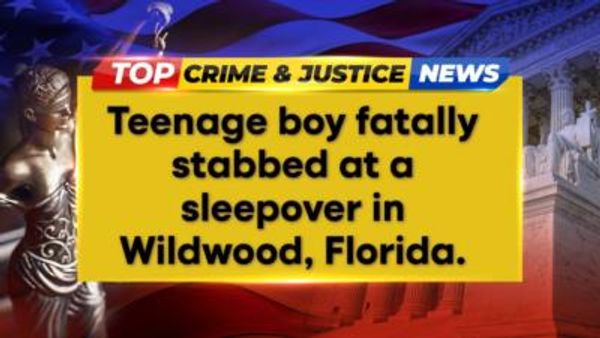
For decades, Muslim and Hindu communities have lived side by side in east Leicester as friends, colleagues and business partners – but unease among residents has been growing for months.
There have been reports of violent assaults, religious symbols being attacked and antisocial behaviour directed at both mosques and temples in recent weeks, with growing anger fuelled by social media speculation.
Tensions boiled over last weekend, with violent unrest erupting on to the streets. People armed with sticks and bats carried out assaults, missiles and fireworks were thrown, police were injured, cars were smashed and 15 people were arrested – taking the total since the start of the unrest to 47.
“This is not just tit-for-tat, this is very, very serious,” said Ruma Ali, a Muslim community activist and Labour councillor in the area. “It’s been going on for months. It is calm for now but there will be reprisals. It feels like people want to fight.”
The situation escalated on Saturday, when a group of at least 300 young masked Hindu men marched for more than two miles through the city, with their route taking them down Green Lane Road, a majority Muslim area.
Security camera footage showed the marchers chanting and sticking their fingers up to swear at businesses on the road.
A large group of Muslim men followed the marchers to Belgrave Road, a majority Hindu area, where violence ensued, including a flag being torn down from outside a temple and another burned.
On Tuesday, a joint statement was issued by Hindu and Muslim leaders in the city, calling for calm.
Many were angry at the lack of police presence, with only eight officers being dispatched to manage the initial crowd as many had been deployed in London for the Queen’s funeral, and they were able to do little to stop the masked marchers.
Leicestershire police issued a statement to say they did not “support an unplanned protest”, that they had no prior knowledge of the event and officers simply did the best they could until more help arrived.
In the immediate aftermath of the weekend’s unrest, media reports were quick to forge a link to a disturbance in the city after an India v Pakistan cricket match in August.
But most people in the area who spoke to the Guardian said the roots go back much further, with tensions stoked by three factors: social media, outside interference and the police not taking issues seriously enough.
The precise moment the tensions began to escalate is unclear, with some pointing to the allegedly unprovoked attack of a young Muslim man on 22 May as an inciting incident. Leicestershire police said the incident is under investigation.
“Over the past few months lots of things have been reported to the police, but it seems like the police have not really been dealing with it, or coming out, or warning people, or arresting people. So there’s been a buildup of anger on both sides,” said Ali.

People from the Muslim and Hindu communities in the area talked of a perceived failure by Leicestershire police to properly investigate a string of incidents over the summer, and how that created a desire for people to take things into their own hands.
Throughout the summer, a conveyor belt of misinformation on social media has caused tensions to escalate.
On 12 September, reports of an attempted abduction of a Muslim teenage girl by three Hindu men, which identified one of the alleged perpetrators, went viral. Two days later, the police issued a statement saying the incident did not take place.
A video showing a coach which the narrator claimed had carried Hindu marchers from west London to Leicester turned out to be false, with GPS data showing the vehicle had actually travelled to the Isle of Wight. The director of the company said he was deluged with death threats and harassment.
“Social media certainly has had a huge part to play in this,” said Yasmin Surti, secretary of the Federation of Muslim organisations in Leicester. “There’s stuff that is factual, but there is so much misinformation out there. And as people who’ve worked in the community for a long time, we need to be more savvy about how we deal with this.”
Fears a rightwing Hindu nationalist ideology is growing among a minority in Leicester, imported by new arrivals from India, have spread of late, but many in the Hindu community are not sure is true – although they admit some migrants from India may have failed to integrate into the community.
There are also questions about how many people from outside the area are coming to Leicester to stoke violence, with almost half of the 18 people arrested after last weekend’s violence coming from outside the county.

“There have been influences from outside who have been discrediting what we have been building for 40 years, and they’re bringing their thinking to the city,” said Dharmesh Lakhani, who works with Hindu temples across Leicester. “Some may call it right wing, I just call it bad thinking.”
Claudia Webbe, the MP for Leicester East, said a small but significant number of youths within her constituency have become increasingly disaffected at a time when there is high in-work poverty and a lack of local facilities, which once encouraged them to mix with people from other communities.
“We need to look at why these 200 or so young men came on to the street wearing balaclavas and blue gloves,” she said. “I believe they are vulnerable to extremist political ideologies because they have a lack of hope, a lack of good job opportunities and a lack of local facilities.”
She said that as local authority funded community facilities have closed, people are increasingly turning to temples and mosques for support instead, where they are less likely to mix with people from other religions. “The lack of public funding remains a contributing factor to these problems which is not being addressed,” she said.
Many in the city are also frustrated by people who know little about the complex situation in the area passing comment. “You always see those generic comments, ‘Oh, all faiths live together, work together, in harmony’,” Ali said. “Well, clearly there’s a problem, clearly they’re not, that’s why they’re fighting. There is a problem, because there’s a lack of dialogue.”
Leicestershire police said proactive patrols in the area and a wider investigation into the violence and reports of assaults are continuing.
There are also fears tensions could spread to other cities. On Tuesday evening, one person was arrested after a group of over 100 men protested outside a Hindu centre in Smethwick, with reports of bottles thrown and cars damaged.
For Ali, ensuring community leaders attend interfaith events will be a crucial way of rebuilding bridges going forward, as well as investing more in youth work and building dialogue with police.
“We have to set an example, show our young people the way forward,” she said. “People are upset, from both sides. But we need to create a dialogue so people can tell us what they want, rather than fighting.”







